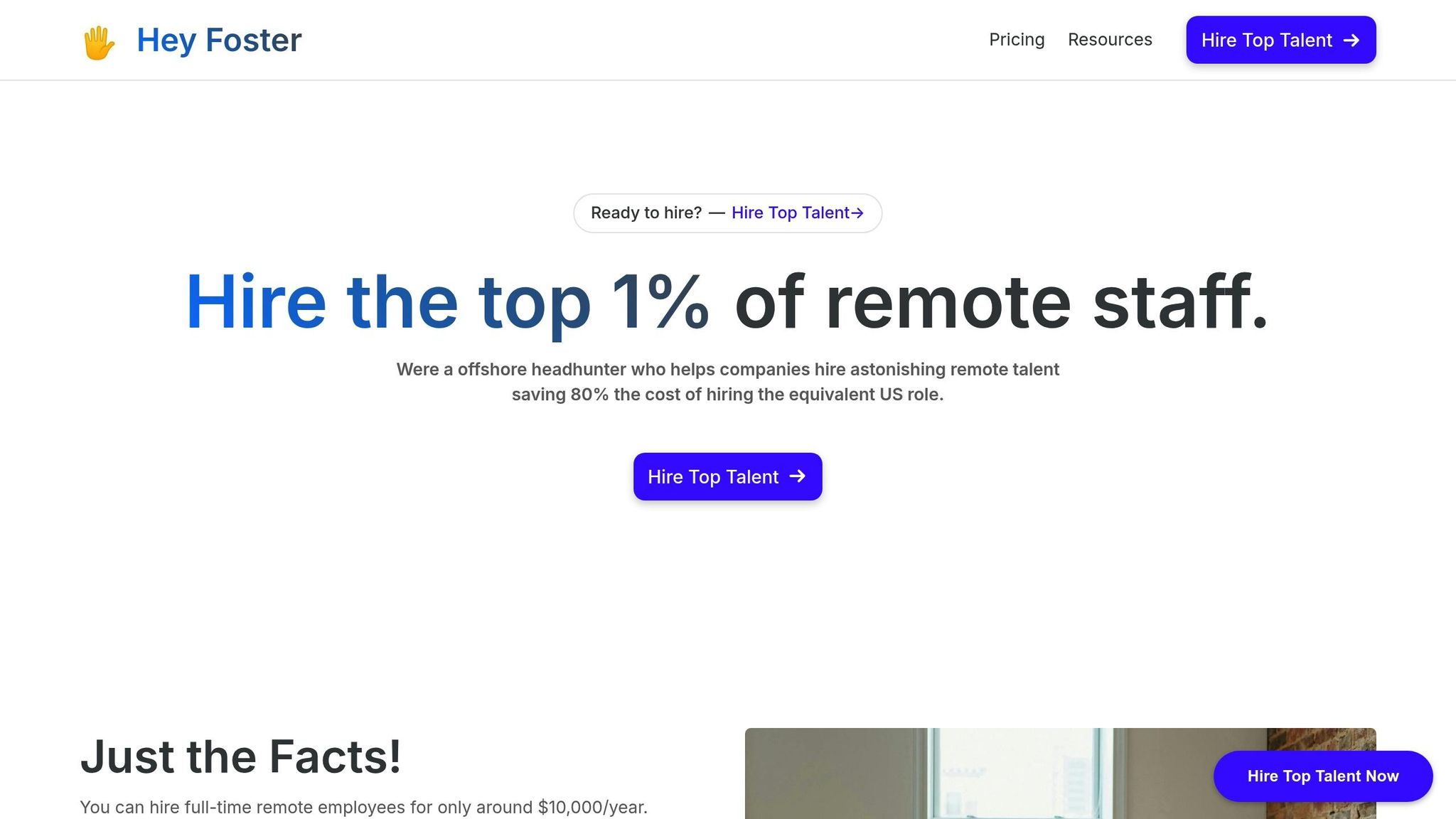Ultimate Guide to Interview Evaluation Criteria

Want to hire better and faster? Start by using clear, standardized interview evaluation criteria. This method ensures every candidate is judged fairly, based on the same benchmarks, and helps teams make quicker, more confident hiring decisions.
Key Benefits:
- Consistency: Evaluate all candidates equally.
- Focus on Key Skills: Prioritize what matters most for the role.
- Efficiency: Speed up the hiring process with clear scoring systems.
- Fairness: Promote objective, merit-based decisions.
What to Evaluate:
- Essential Skills: Test job-specific abilities, like language proficiency and remote work experience.
- Team Fit: Check for alignment with workplace norms and company values.
How to Score: Use a simple rating scale (e.g., 1–5) and weight criteria like technical skills (40–50%), professional attributes (30–35%), and team alignment (20–25%).
Next Steps: Create standardized forms, train your team, and use structured methods like the STAR framework during interviews.
INTERVIEW SCORING SHEET! (How you will be ASSESSED ...
Core Evaluation Criteria
Clear criteria help ensure candidates are evaluated fairly and consistently. Here's what to focus on:
Assessing Essential Skills
Evaluate the abilities directly tied to job performance:
- Language Skills: Test English proficiency through both written and verbal communication.
- Remote Work Experience: Check past roles to confirm the candidate’s ability to work effectively in a remote setup.
Evaluating Team and Company Compatibility
Compatibility with the team and company culture plays a big role in long-term success, especially in remote environments. Pay attention to their understanding of workplace norms.
| Key Factor | What to Look For |
|---|---|
| Workplace Familiarity | Knowledge of Western work culture and practices |
Next, we’ll dive into creating a scoring system to measure these criteria effectively.
Creating a Scoring System
A clear scoring system helps standardize how candidates are evaluated for both their technical skills and how well they align with the company culture. It uses the standardized criteria mentioned earlier to assign measurable scores to each candidate.
Rating Scale Options
Pick a rating scale that strikes a balance between simplicity and detail:
| Scale Type | Description | Best For |
|---|---|---|
| 1-5 Scale | Common format with clear benchmarks | General skill evaluations |
| 1-3 Scale | Simple pass/neutral/fail system | Quick initial screenings |
| Behavioral Anchors | Detailed descriptions for each score level | Complex or specialized roles |
Example (1–5 Scale):
- Below Expectations: Major skill gaps
- Needs Development: Has potential but needs significant training
- Meets Requirements: Displays the necessary skills
- Exceeds Expectations: Performs strongly in all areas
- Outstanding: Exceptional skills and aligns perfectly with company culture
After defining the scale, assign weights to prioritize what matters most for the role.
Criteria Prioritization
Distribute weight based on the role's specific needs:
Critical Skills: 40–50%
- Technical expertise
- Communication skills
- Role-specific knowledge
Professional Attributes: 30–35%
- Experience with remote work
- Problem-solving skills
- Time management
Cultural Alignment: 20–25%
- Ability to work well with the team
- Alignment with company values
- Flexibility
You can tweak these percentages depending on the role. For instance, leadership positions might prioritize management skills, while entry-level roles focus more on basic technical abilities.
Interview Question Framework
Create questions that encourage candidates to share specific examples from their past work. The STAR method is a great tool for this. It guides candidates to explain a Situation, the Task they were responsible for, the Action they took, and the Result they achieved. This approach helps uncover their problem-solving abilities and how well they align with the role.
Maintaining Evaluation Quality
Consistency is crucial when it comes to hiring. A collaborative process helps ensure fair and high-quality evaluations.
Team-Based Assessment
Assemble a panel of 3–4 members with varied expertise to cover technical knowledge, alignment with company values, and the specific skills required for the role.
Each panelist should fill out a standardized scoring sheet independently, including specific examples to back their assessments. Afterward, the group should participate in a structured debrief to discuss and align their feedback.
This team-based method helps create thorough evaluations while reducing bias, setting the stage for the next steps.
Next Steps
Benefits Review
Using standardized criteria in hiring brings several advantages. These benchmarks help ensure evaluations are consistent, keep the team on the same page, and make the process more efficient.
- Consistent Decision-Making: Uniform benchmarks lead to more reliable hiring outcomes.
- Faster Hiring Process: Clear criteria speed up candidate evaluations without compromising quality.
- Improved Team Agreement: Standardized benchmarks make it easier for everyone to reach a consensus on candidates.
These advantages provide a solid starting point for putting a structured plan into action.
Implementation Guide
Follow these steps to set up your evaluation system:
Define Role Requirements
Write detailed job descriptions that specify the required skills, experience, and personal traits. Be sure to include both technical abilities and soft skills critical for success.Create Evaluation Forms
Develop standardized forms to assess technical expertise, cultural compatibility, communication skills, remote work readiness, and relevant past experiences.Train Your Interview Team
Ensure interviewers know how to use rating scales consistently, document specific examples, avoid bias, and keep accurate records.
Hey Foster Services

Hey Foster takes this framework further with a streamlined method for hiring remote talent. Their process is designed to thoroughly assess candidates for English proficiency, cultural compatibility, and remote work experience. As Billy Sandy, a Real Estate Agent, shared:
"Hey Foster made hiring offshore talent in the Philippines effortless. The process was smooth, the team was professional, and the quality of hires exceeded our expectations. Highly recommend!" [1]
Hey Foster’s structured approach includes end-to-end support for sourcing and screening candidates. Plus, their 6-month Right Match Promise ensures you can focus on your business while they handle the hiring process.